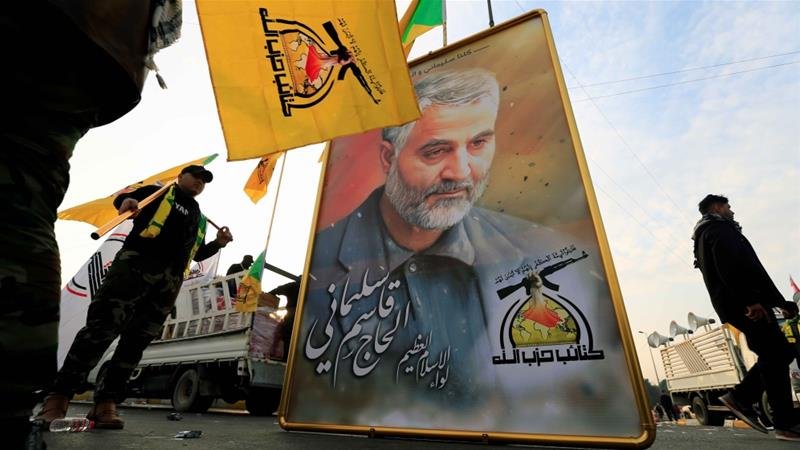Why Did the US Kill Qassem Soleimani?

Executive Summary: The targeted killing of Qassem Soleimani was a major blow to the Islamic regime in Tehran. Soleimani misperceived and miscalculated Donald Trump’s intentions, took his aggressive designs a step too far, and crossed the American president’s red lines.
President Trump wanted to disengage from the Middle East and showed much restraint in the face of Iranian provocations in the Gulf, but refused to tolerate the attacks by pro-Iranian militias on an American base and the American embassy in Baghdad.
It is extremely difficult to forecast what will happen next. The future could entail a major war, negotiations, or several scenarios in between, including an American withdrawal from the Middle East.
While the US and Iran have quarreled over the nuclear deal, they share two major interests: neither wants a major war, and both want the US to disengage from the Middle East. Trump has stated these interests several times and has demonstrated them by tolerating repeated Iranian violent provocations in the Gulf, allowing the Turkish invasion and occupation of northern Syria, and withdrawing American forces from that area.
Both countries have expressed interest in negotiating to settle the conflict over the 2015 nuclear deal. At the last meeting of the UN General Assembly, President Trump practically begged for a meeting with President Rouhani. He was rebuffed because Tehran set a precondition that was unacceptable to Trump: an immediate removal of the harsh US sanctions.
How, then, did Iran and the US come to a direct violent confrontation that could lead to a major war they both want to avoid? The answer may be found in missed perceptions and miscalculations, primarily on the Iranian side.
The targeted killing of Qassem Soleimani was not a retaliation for the attack by his Shiite militias on the US embassy. That attack was simply the straw that broke the camel’s back. Throughout the second half of 2019, Trump has showed great restraint in the face of a series of violent Iranian provocations in the Gulf.
In May, Iran attacked oil tankers in the Gulf. In June, it downed an expensive American drone. In September, it attacked major oil facilities in Saudi Arabia. All these provocations were designed to counter the American sanctions. Trump didn’t respond to any of them, to the chagrin of the US’s Arab allies and Israel.
Soleimani and his immediate superior and mentor Ayatollah Khamenei interpreted Trump’s statements and inaction in the Gulf and in northern Syria to mean he was timid. They also likely assumed that because a presidential election is looming in the US, Trump would not dare risking a major war. They miscalculated and were caught by surprise. They were correct that Trump does not want another entanglement in the region, but particularly in an election year he can’t afford to look wimpy and withdraw under Iranian military pressure.
What tipped Trump out of restraint and into retaliation was the attack by Soleimani’s pro-Iranian militias on an American base in Baghdad and the killing of an American citizen.
The same phenomenon occurred during Barack Obama’s tenure in the White House. He, like Trump, wanted to disengage from the Middle East. He minimized the threat of ISIS and felt forced to wage war only when the jihadists started beheading American journalists and aid workers.
Several international conventions in which both Iran and Iraq participate define diplomatic missions as extraterritorial. The host country is forbidden from entry to the premises of a mission without the permission of the represented country, even to put out a fire. International rules also define an attack on an embassy as an attack on the represented country. Iran violated these rules.
Attacks on US diplomatic missions also touch a highly sensitive nerve in the history of American foreign policy. The chaotic desertion of the US embassy in Saigon in 1975, the obliteration of the US embassy in Tehran in 1979 and the holding of 52 American diplomats hostage for 444 days, and the attack on the US diplomatic post and the CIA annex in Benghazi, Libya in 2012 left deep scars on American prestige and honour. Soleimani did not learn lessons from these previous embassy incidents. To make matters worse, Khamenei infuriated Trump on a personal level by taunting him with the words “You can’t do a damn thing.”
The next steps are hard to foresee. Iran has promised a painful retaliation against the US and its allies. If Tehran pursues harsh revenge, Trump would have to respond in kind. A cycle of escalating retaliations could lead to a major war, but also to other scenarios such as a US withdrawal from the region or negotiations over a new nuclear deal and an end to the conflict.
Iran would like to see a Democrat win the 2020 presidential election and may take steps to help secure that outcome. Regardless, the main lesson for the US from the recent exchanges of fire is to avoid mixed messages and confusing actions that can lead to misperceptions and miscalculations.
This article was originally published at BESA Centre website


















